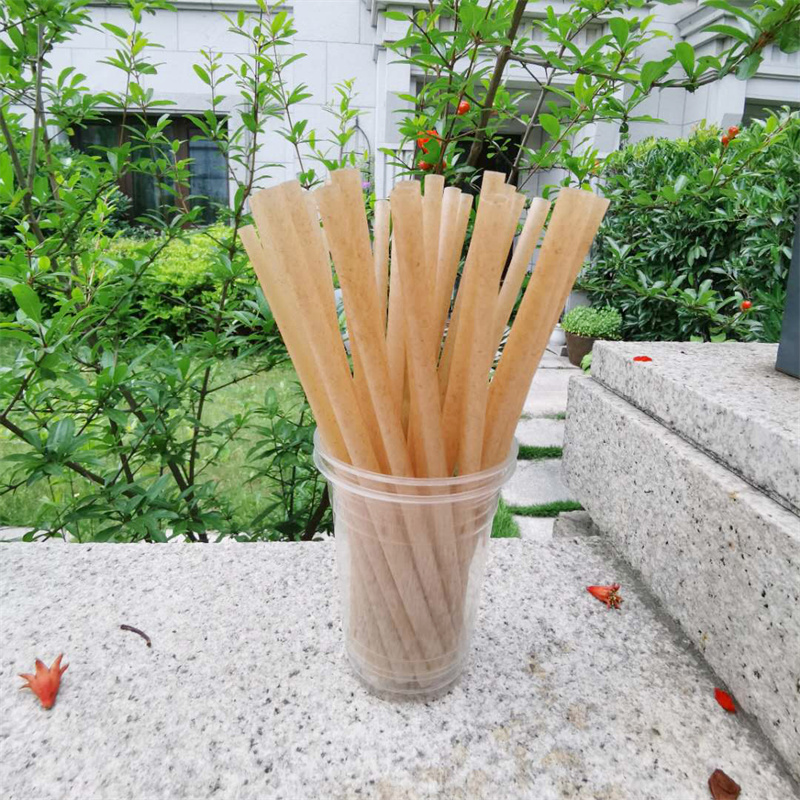1. Source Material & Sustainability:
● Plastic: Made from finite fossil fuels (oil/gas). Production is energy-intensive and contributes significantly to greenhouse gas emissions.
● Regular Paper: Often made from virgin wood pulp, contributing to deforestation. Even recycled paper requires significant processing and chemicals.
● Other Plant-Based (e.g., PLA, Wheat, Rice, Bamboo): PLA is typically made from corn or sugarcane starch, requiring dedicated crops. Wheat, rice, or bamboo straws also use primary agricultural products or specific harvesting.
● Sugarcane Bagasse: Made from the fibrous residue (bagasse) left over after extracting juice from sugarcane. It’s a waste product being upcycled, requiring no additional land, water, or resources dedicated solely for straw production. This makes it highly resource-efficient and truly circular.
2. End-of-Life & Biodegradability:
● Plastic: Persists in the environment for hundreds to thousands of years, breaking down into microplastics. Recycling rates for straws are extremely low.
● Regular Paper: Biodegradable and compostable in theory. However, many are coated with plastics (PFA/PFOA) or waxes to prevent sogginess, hindering decomposition and potentially leaving microplastics or chemical residues. Even uncoated paper decomposes slowly in landfills without oxygen.
● Other Plant-Based (PLA): Requires industrial composting facilities (specific high heat & microbes) to break down efficiently. PLA behaves like plastic in home compost or marine environments and contaminates plastic recycling streams. Wheat/Rice/Bamboo are biodegradable but decomposition rates vary.
● Sugarcane Bagasse: Naturally biodegradable and compostable in both industrial and home compost environments. It breaks down much faster than paper and leaves no harmful residues. Certified compostable bagasse straws are plastic/PFA-free.
3. Durability & User Experience:
● Plastic: Highly durable, doesn’t get soggy.
● Regular Paper: Prone to becoming soggy and collapsing, especially in cold or hot drinks, within 10-30 minutes. Unpleasant mouthfeel when wet.
● Other Plant-Based: PLA feels like plastic but can soften slightly in hot drinks. Wheat/Rice can have a distinct taste/texture and may also soften. Bamboo is durable but often reusable, requiring washing.
● Sugarcane Bagasse: Significantly more durable than paper. Typically lasts 2-4+ hours in drinks without becoming soggy or losing structural integrity. Provides a user experience much closer to plastic than paper does.
4. Production Impact:
● Plastic: High carbon footprint, pollution from extraction and refining.
● Regular Paper: High water usage, chemical bleaching (potential dioxins), energy-intensive pulping. Deforestation concerns.
● Other Plant-Based: PLA production is complex and energy-intensive. Wheat/Rice/Bamboo require agricultural inputs (water, land, potential pesticides).
● Sugarcane Bagasse: Utilizes waste, reducing landfill burden. Processing is generally less energy and chemically intensive than virgin paper production. Often uses the biomass energy from burning bagasse at the mill, making it more carbon-neutral.
5. Other Considerations:
● Plastic: Harmful to wildlife, contributes to ocean plastic crisis.
● Regular Paper: Coating chemicals (PFA/PFOA) are persistent environmental toxins and potential health concerns.
● Other Plant-Based: PLA confusion leads to contamination. Wheat straws may contain gluten. Bamboo needs sanitization if reusable.
● Sugarcane Bagasse: Naturally gluten-free. Food-safe when produced to standard. No chemical coatings needed for functionality.
Summary Comparison Table:
|
Feature |
Plastic straw |
Regular paper straw |
PLA straw |
Other plant-based (Wheat/Rice) |
Sugarcane/bagasse straw |
|
Source |
Fossil Fuels |
Virgin Wood/Recycled Paper |
Corn/Sugarcane Starch |
(Wheat Stems/Rice |
Sugarcane Waste (Bagasse) |
|
Biodeg.(home) |
❌ No (100s+ yrs) |
Slow/Often Coated |
❌ No (behaves like plastic) |
✅ Yes (Variable Speed) |
✅ Yes (Relatively Fast) |
|
Biodeg.(Ind.) |
❌ No |
Yes (if uncoated) |
✅ Yes |
✅ Yes |
✅ Yes |
|
Sogginess |
❌ No |
❌ High (10-30 mins) |
Minimal |
Moderate |
✅ Very Low (2-4+ hrs) |
|
Durability |
✅ High |
❌ Low |
✅ High |
Moderate |
✅ High |
|
Ease of Recyc. |
Low (Rarely done |
Complicated/Contaminated |
❌ Contaminates Stream |
❌ Not Recyclable |
❌ Not Recyclable |
|
Carton Footprint |
❌ High |
Medium-High |
Medium |
Low-Medium |
✅ Low (Uses Waste/Byproduct) |
|
Land Use |
❌ ((Oil Extraction) |
❌ (Oil Extraction) |
(Dedicated Crops) |
(Dedicated Crops) |
✅ None (Waste Product) |
|
Key Advantage |
Durability/Cost |
Biodeg. (Theoretical) |
Feels Like Plastic |
Biodegradable |
Durability + True Circularity + Low Footprint |
Sugarcane bagasse straws offer a compelling balance:
1, Superior Environmental Profile: Made from abundant agricultural waste, minimizing resource use and landfill burden.
2, Excellent Functionality: Far more durable and resistant to sogginess than paper straws, providing a better user experience.
3, True Compostability: Breaks down naturally in appropriate environments without leaving harmful microplastics or chemical residues (ensure certified compostable).
4, Lower Overall Impact: Utilizes a byproduct, often leveraging renewable energy in production.
While no single-use option is perfect, sugarcane bagasse straws represent a significant step forward from plastic and a functional improvement over standard paper straws, leveraging waste for a practical, lower-impact solution.
Web: www.mviecopack.com
Email:orders@mvi-ecopack.com
Telephone: 0771-3182966
Post time: Jul-16-2025












